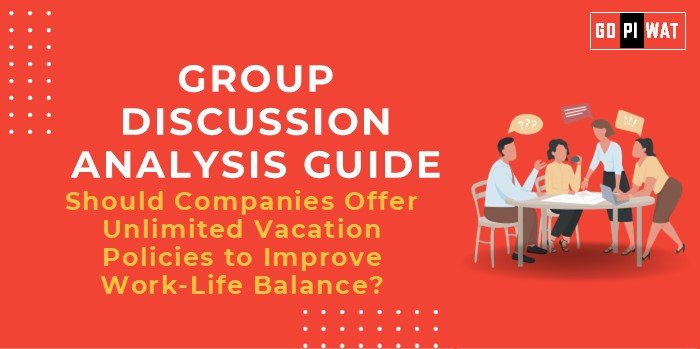📋 Should Companies Offer Unlimited Vacation Policies to Improve Work-Life Balance?
🌐 Introduction to the Topic
Context: The concept of unlimited vacation policies has emerged as a progressive corporate trend aimed at enhancing employee well-being and organizational productivity. Leading companies like Netflix and LinkedIn have implemented this model, sparking debates about its feasibility, implications, and outcomes.
Background: Initially popularized in Silicon Valley, unlimited vacation policies aim to empower employees to balance personal and professional priorities autonomously. Critics, however, question whether this approach genuinely promotes work-life balance or simply adds ambiguity to workplace expectations.
📊 Quick Facts and Key Statistics
- 🌍 Unlimited Vacation Implementation: Adopted by 10% of global companies, primarily in technology and creative industries (2024, SHRM).
- 🔥 Burnout Crisis: Over 77% of employees report burnout in traditional work environments (Gallup, 2023).
- 📅 Usage Rates: Employees with unlimited vacation often take 13-18 days annually compared to the global average of 15 days (LinkedIn Work Culture Report, 2023).
- 💼 Productivity Impact: Organizations with flexible policies report a 25% boost in employee satisfaction and retention (Harvard Business Review, 2023).
👥 Stakeholders and Their Roles
- Employees: Key beneficiaries, expected to balance workload independently while maximizing efficiency.
- Employers: Responsible for creating trust-based environments and ensuring productivity remains unaffected.
- HR Departments: Design and oversee policy frameworks and monitor their effectiveness.
- Industry Observers: Assess the impact on corporate culture, retention rates, and productivity benchmarks.
🎯 Achievements and Challenges
🏆 Achievements:
- Enhanced Autonomy: Promotes trust and empowers employees, reducing micromanagement.
- Retention Rates: Companies with these policies see up to a 35% increase in employee retention (SHRM, 2023).
- Improved Mental Health: Reduction in reported stress and burnout cases.
- Global Adoption: Successful implementations in innovative organizations like HubSpot and Asana.
⚠️ Challenges:
- Policy Misuse: Ambiguity can lead to underuse or overuse of vacation days.
- Productivity Concerns: Risks of project delays or workload imbalances.
- Cultural Variations: The model may not align with all organizational or regional work cultures.
- Lack of Clear Guidelines: Employees may feel hesitant to take time off due to implicit performance expectations.
🌎 Global Comparisons:
- Successful Model: Sweden’s flexible vacation policies foster a 36-hour workweek, improving work-life balance.
- Struggles: In Japan, cultural hesitance limits the effective use of flexible time-off policies.
Case Study: Netflix’s unlimited vacation policy integrates performance reviews and accountability, maintaining productivity while encouraging employee well-being.
📖 Structured Arguments for Discussion
- Supporting Stance: “Unlimited vacation policies represent the future of progressive workplaces, fostering trust and empowering employees to achieve a better work-life balance.”
- Opposing Stance: “Such policies introduce ambiguity, causing employees to feel guilty about time off, ultimately undermining the intended benefits.”
- Balanced Perspective: “While unlimited vacation policies promote flexibility, their success depends on clear communication and trust-driven work cultures.”
🗣️ Effective Discussion Approaches
- Opening Approaches:
- Begin with a global perspective: “Companies like Netflix and HubSpot exemplify how unlimited vacation can redefine work-life balance…”
- Present a challenge: “Despite its appeal, unlimited vacation policies often backfire due to unclear expectations…”
- Counter-Argument Handling:
- Highlight solutions: “Clearer policy guidelines and training managers to foster trust can address these challenges.”
- Use data: “Studies show that unlimited vacation policies boost employee retention rates by up to 35%.”
📊 Strategic Analysis: SWOT Framework
- Strengths: Employee autonomy, reduced burnout, improved retention.
- Weaknesses: Risk of misuse, cultural misfit.
- Opportunities: Differentiating employers in competitive industries.
- Threats: Unclear guidelines and potential productivity decline.
📚 Connecting with B-School Applications
- Real-World Applications: Explore HR policies as case studies in organizational behavior projects.
- Sample Interview Questions:
- “How would you design an unlimited vacation policy to prevent misuse?”
- “What cultural barriers might limit the success of such policies globally?”
- Insights for B-School Students:
- Unlimited vacation policies highlight the intersection of HR innovation and corporate culture.
- Implementation challenges offer lessons in change management and policy design.


